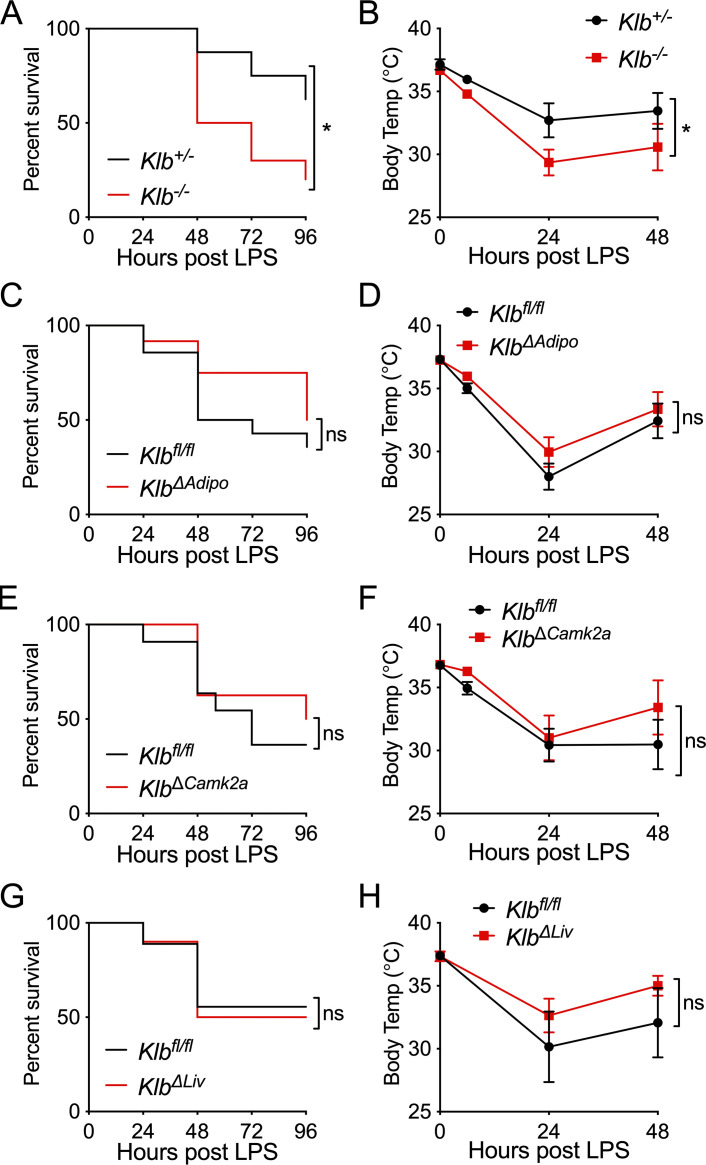Figure 3.
KLB signaling is required for surviving endotoxemia. (A and B) Klb+/− and Klb−/− mice were challenged with 10 mg/kg i.p. LPS, n = 8–10/group; data are from one of three independent experiments with similar results. (A) Kaplan–Meier survival curve. (B) Rectal temperatures. (C and D) Klbfl/fl and KlbΔAdipo mice were challenged with 15 mg/kg i.p. LPS, n = 10–14/group; pooled data are from two independent experiments. (C) Kaplan–Meier survival curve. (D) Rectal temperatures. (E and F) Klbfl/fl and Camk2a-Cre;Klbfl/fl (KlbΔCamk2a) mice were challenged with 15 mg/kg i.p. LPS, n = 8–11/group; pooled data are from two independent experiments. (E) Kaplan–Meier survival curve. (F) Rectal temperatures. (G and H) Klbfl/fl and Alb-Cre;Klbfl/fl (KlbΔLiv) mice were challenged with 10 mg/kg i.p. LPS, n = 9–10/group; pooled data are from two independent experiments. (G) Kaplan–Meier survival curve. (H) Rectal temperatures. Data are expressed as mean ± SEM. *, P < 0.05; log-rank (Mantel–Cox) test (A, C, E, and G) or two-way ANOVA with Sidak’s multiple comparisons test (B, D, F, and H).

